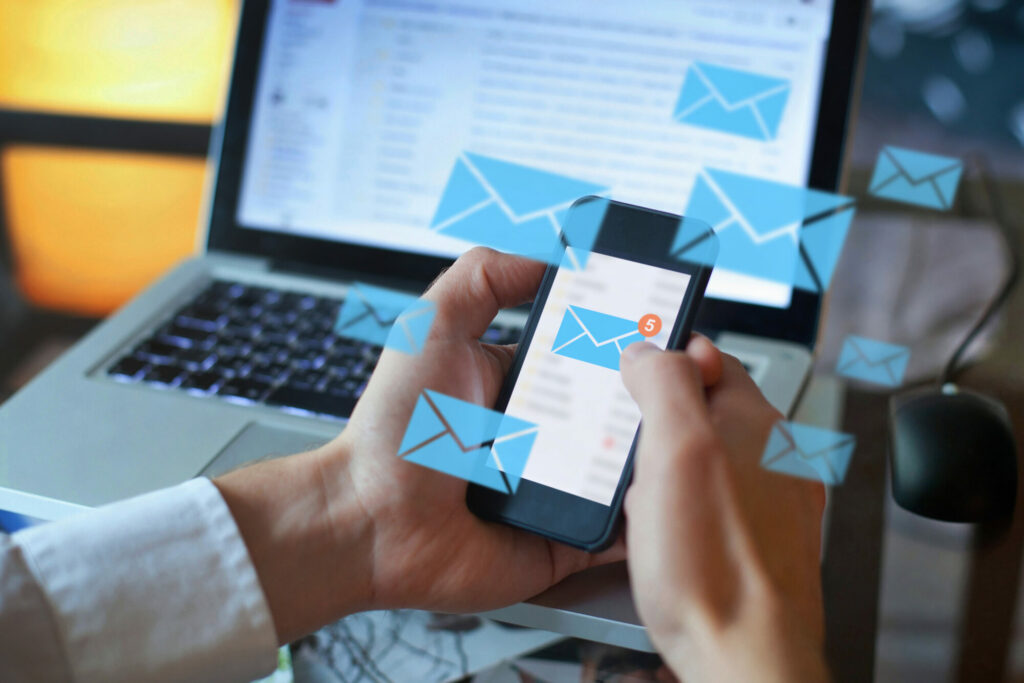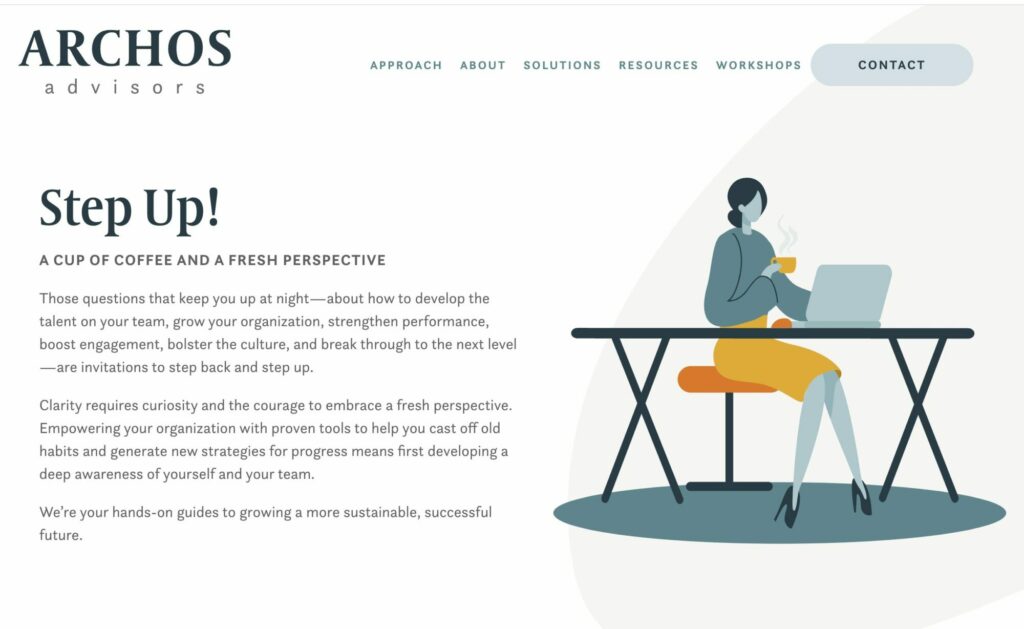Email marketing remains a cornerstone of effective business communication and customer engagement for any B2B enterprise. Despite the rise of various marketing channels, email continues to offer unparalleled opportunities for nurturing leads, building relationships, and driving conversions in the B2B sector. With its ability to deliver personalized, targeted messages directly to decision-makers, email marketing provides a powerful tool for businesses to showcase their expertise, products, and services.
The benefits of a well-executed B2B email marketing strategy are numerous. From increased brand awareness and lead generation to improved customer retention and higher ROI, email campaigns can significantly impact a company’s bottom line. Moreover, email allows for precise tracking and analytics, enabling marketers to refine their approach continually. In this comprehensive guide, we’ll explore proven strategies and techniques to elevate your B2B email marketing efforts and boost customer engagement.
What Is B2B Email Marketing?
B2B email marketing refers to the practice of using email communications to promote products, services, or content to other businesses, rather than individual consumers. This aspect of digital marketing targets decision-makers within organizations, aiming to build professional relationships, generate leads, and ultimately drive business growth.
While B2B and B2C email marketing share some common principles, they differ significantly in their approach and execution. B2B emails typically focus on logic-driven content, emphasizing factors like return on investment, efficiency improvements, and long-term business benefits. In contrast, B2C emails often appeal to emotions and immediate personal needs. B2B email campaigns also tend to have longer sales cycles, requiring multiple touchpoints and nurturing strategies to move prospects through the decision-making process.
The tone and content of B2B emails are generally more formal and information-rich compared to B2C counterparts. They often include industry-specific jargon, detailed product specifications, and case studies that demonstrate value in a business context. Additionally, B2B email lists are usually smaller and more targeted, focusing on quality over quantity.
In a comprehensive digital marketing strategy, B2B email marketing plays a crucial role. It serves as a direct line of communication with potential and existing clients, allowing businesses to:
- Nurture leads through the sales funnel
- Establish thought leadership by sharing valuable industry insights
- Promote webinars, white papers, and other content assets
- Announce new products or services
- Provide personalized communication at scale
By leveraging data and automation tools, B2B email marketing enables companies to deliver the right message to the right person at the right time, significantly enhancing the effectiveness of their overall marketing efforts. This precision targeting and personalization capability make email marketing an indispensable tool in the B2B marketer’s arsenal, offering a cost-effective way to reach and engage decision-makers across various industries and company sizes.

FAQ
Question 1: Is it OK to use an emoji in a subject line?
Using emojis in subject lines can be effective, but it depends on your audience and brand voice.
Question 2: Can an email be too long?
Yes, an email can be too long. It’s important to break up the text with subheadings, bullet points, and white space for easy scanning.
Question 3: Beyond the obvious answer, what is one key difference between B2B and B2C email marketing?
B2B emails typically focus on logic-driven content, emphasizing factors like return on investment, efficiency improvements, and long-term business benefits, while B2C emails often appeal to emotions and immediate personal needs.
Question 4: According to the article, what is the potential ROI for email marketing?
Some reports cite returns as high as $42 for every dollar spent on email marketing.
Question 5: Name three key metrics to track in B2B email marketing.
Three key metrics to track in B2B email marketing are open rate, click-through rate (CTR), and conversion rate.
Question 6: What is the recommended character length for email subject lines?
The recommended character length for email subject lines is 40-50 characters.
Question 7: Which days of the week are generally considered less effective for sending B2B emails?
Friday afternoons and Mondays are generally considered less effective for sending B2B emails. Mid-week mornings tend to perform well, though this can vary by sector.
Benefits of Email Marketing
Email marketing offers numerous advantages for B2B companies, making it an essential component of their marketing strategy. One of the most significant benefits is its cost-effectiveness. Compared to traditional marketing channels, email campaigns require minimal investment while potentially reaching a vast audience, resulting in an impressive return on investment (ROI). Studies consistently show that email marketing delivers one of the highest ROIs among all marketing channels, with some reports citing returns as high as $42 for every dollar spent.
The ability to reach a highly targeted audience is another key advantage. B2B marketers can segment their email lists based on various criteria such as industry, company size, job title, or stage in the buying process. This precision targeting ensures that messages resonate with recipients, increasing engagement and conversion rates.
Personalization and customization capabilities further enhance email marketing’s effectiveness. Modern email marketing platforms allow for dynamic content insertion, enabling businesses to tailor messages to individual recipients’ preferences, behaviors, and needs. This level of personalization fosters stronger connections with prospects and customers, leading to improved relationships and increased loyalty.
Moreover, email marketing provides unparalleled measurability and flexibility. Marketers can track open rates, click-through rates, and conversions in real-time, allowing for quick adjustments and optimization of campaigns. This data-driven approach enables continuous improvement and refinement of marketing strategies.
Steps in Creating a B2B Email Marketing Strategy
Developing an effective B2B email marketing strategy requires careful planning and execution. Here are the key steps to create a robust strategy:
Select the Right Email Service Provider (ESP): Choose an ESP that aligns with your business needs, offering features like automation, segmentation, and detailed analytics. Consider factors such as scalability, integration capabilities, and compliance with data protection regulations.
Set Clear Goals: Define specific, measurable objectives for your email campaigns. These might include increasing lead generation, boosting engagement rates, or driving conversions. Your goals will guide your strategy and help measure success.
Understand Your Audience: Conduct thorough research to identify your target audience’s pain points, preferences, and behaviors. Use this information to create buyer personas that will inform your content and segmentation strategies.
Create Compelling Content: Develop valuable, relevant content that addresses your audience’s needs and challenges. Focus on educational materials, industry insights, and solutions to common problems. Ensure your content is mobile-responsive and visually appealing.
Segment Your Email List: Divide your subscriber list into smaller, more targeted groups based on criteria such as industry, company size, job role, or engagement level. This allows for more personalized and relevant messaging.
Implement Automation: Utilize email automation to streamline your campaigns and deliver timely, targeted messages. Set up welcome series, nurture sequences, and trigger-based emails to guide prospects through the buyer’s journey.
Measure and Optimize Performance: Regularly analyze key metrics such as open rates, click-through rates, and conversion rates. Use these insights to continually refine your strategy, test different approaches, and improve campaign effectiveness.

More than half of emails are read on a smartphone or other mobile device.
Crafting Effective B2B Email Campaigns
Successful B2B email campaigns are built on a foundation of relevance, value, and strategic execution. At the heart of these campaigns lies personalization – the key to cutting through inbox clutter and resonating with busy professionals.
Personalization goes beyond simply using the recipient’s name. It involves tailoring content, offers, and timing to match the recipient’s industry, role, and stage in the buyer’s journey. Leverage data from your CRM and previous interactions to create highly targeted messages that speak directly to each recipient’s needs and pain points.
Subject lines play a crucial role in determining whether your email gets opened or ignored. To craft engaging subject lines:
- Keep them concise (40-50 characters)
- Create a sense of urgency or curiosity
- Use action-oriented language
- Avoid spam trigger words
- A/B test different variations to identify what resonates with your audience
For the email content itself:
- Start with a clear, compelling headline that reinforces the subject line
- Use a professional, conversational tone that aligns with your brand voice
- Focus on benefits rather than features
- Include a clear, prominent call-to-action (CTA)
- Break up text with subheadings, bullet points, and white space for easy scanning
- Incorporate relevant images or infographics to support your message
Remember that B2B decision-makers are often looking for solutions to complex problems. Provide valuable insights, data, or case studies that demonstrate your expertise and the tangible benefits of your offering. Consider using storytelling techniques to make your content more engaging and memorable.
Timing is also crucial. Nobody is dying to read your email on a Friday afternoon, and they might be too buried in emails on a Monday. Research your industry to determine the best days and times to send emails. Generally, mid-week mornings tend to perform well for B2B emails, but this can vary by sector.
Finally, ensure your emails are mobile-responsive. With more professionals checking email on mobile devices, a seamless mobile experience is essential for campaign success.
Automation and Personalization
Automation and personalization are powerful tools in B2B email marketing, enabling businesses to deliver timely, relevant messages at scale. By focusing on personalization, crafting attention-grabbing subject lines, and creating valuable, well-structured content, you can significantly improve the effectiveness of your B2B email campaigns and drive better engagement with your target audience.
Automation streamlines email marketing processes by triggering pre-defined sequences based on specific actions or timeframes. This allows for consistent, timely communication without manual intervention. Key benefits include:
- Improved efficiency and time savings
- Consistent brand messaging
- Better lead nurturing through targeted follow-ups
- Increased engagement through timely, relevant content
Personalization takes automation a step further by tailoring content to individual recipients. This goes beyond simply inserting a name; it involves customizing entire email content based on recipient data. Benefits include:
- Higher open and click-through rates
- Improved customer experience
- Increased relevance and value for recipients
- Better conversion rates and ROI
Tools and techniques for implementing automation and personalization include:
- Marketing automation platforms (e.g., HubSpot, SharpSpring, Delivra)
- Dynamic content insertion based on recipient data
- Behavioral triggers (e.g., website visits, content downloads)
- Lead scoring to tailor content based on prospect engagement
- A/B testing to optimize personalization strategies
- AI-powered tools for predictive personalization
When implementing these strategies, it’s crucial to maintain a balance. While automation and personalization can greatly enhance your email marketing, they should never come at the cost of authenticity. Ensure your emails still feel human and align with your brand voice.
By leveraging automation and personalization effectively, B2B marketers can create more targeted, efficient, and impactful email campaigns that resonate with their audience and drive business results—and driving results is something we’ve done for the B2B enterprises showcased in our portfolio, including these three companies:



Measuring and Analyzing Email Marketing Performance
Effective B2B email marketing relies on continuous measurement and analysis to drive improvement. By tracking key metrics and analyzing performance data, marketers can refine their strategies and optimize future campaigns.
Key metrics to track in B2B email marketing include:
- Open rate: Percentage of recipients who open your email
- Click-through rate (CTR): Percentage of recipients who click on links within the email
- Conversion rate: Percentage of recipients who complete a desired action (e.g., filling out a form, requesting a demo)
- Bounce rate: Percentage of emails that couldn’t be delivered
- Unsubscribe rate: Percentage of recipients who opt out of future emails
- List growth rate: Rate at which your email list is growing
- Return on Investment (ROI): Overall financial return from your email marketing efforts
Tools for measuring performance include:
- Email service provider analytics (e.g., Mailchimp, Constant Contact)
- Google Analytics for website traffic and conversions
- CRM systems for tracking lead progression
- A/B testing tools for comparing campaign variations
Strategies for analyzing data and improving campaigns:
- Segment your data to identify trends among different audience groups
- Compare performance across different campaigns and time periods
- Use A/B testing to experiment with subject lines, content, and send times
- Analyze heat maps to understand which parts of your emails engage recipients most
- Set benchmarks based on industry standards and your historical performance
- Regularly review and act on insights, adjusting your strategy accordingly
By consistently measuring and analyzing your email marketing performance, you can make data-driven decisions to enhance engagement, improve conversions, and ultimately drive better results for your B2B email marketing efforts.
Case Study: Nurturing Long-Term Partnerships Through Targeted B2B Email Marketing
Challenge:
Archos Advisors, a boutique consulting firm specializing in talent development, growth strategies, change management, and cultural fortification, approached Rare Bird to help strengthen their brand and engage potential high-value clients.
Solution:
Rare Bird realized that in Archos Advisors’ niche market, success wasn’t about converting large numbers of leads, but rather finding and nurturing the right long-term partners. With this insight, we developed a highly targeted, multi-touch campaign called “Step Up!” that leveraged the power of personalized B2B email marketing combined with other touchpoints. The strategy focused on quality over quantity, aiming to keep Archos visible and relevant to a select group of potential partners. Key elements included:
1. Precision targeting: Archos Advisors identified a small, carefully curated list of potential clients who aligned perfectly with their ideal partner profile, rather than casting a wide net.
2. Personalized email series: Rare Bird crafted a sequence of five automated emails, each focusing on a specific area of Archos Advisors’ expertise. These emails were designed to showcase thought leadership and provide genuine value to recipients while driving traffic to the company’s website.
3. Multi-channel approach: To enhance engagement, Rare Bird supplemented the email campaign with:
- A direct mail package containing five themed coffee pods, timed to arrive just before the email series began.
- Custom landing pages with video content expanding on each email’s theme.
- Clear, low-pressure calls-to-action inviting recipients to schedule consultations or further conversations.
4. Long-term nurturing: Rare Bird designed the campaign not for immediate conversion, per se, but to build relationships over time, with follow-up emails and occasional “touch base” messages scheduled over the following months to maintain visibility without being intrusive.

Results:
- 80% open rate on the email series, significantly higher than industry averages.
- 30% of targeted companies engaged in meaningful conversations with Archos Advisors.
- Positive feedback from recipients, with many expressing appreciation for the thoughtful, non-pushy approach.
- Increased brand recognition and perception of Archos Advisors as a thought leader in their niche.
Key Takeaways:
This case study demonstrates Rare Bird’s understanding that for B2B email marketing, especially in niche consultancy fields, success isn’t measured by mass conversions. Instead, they utilized email as a cost-effective tool to keep Archos visible and relevant to a select group of potential partners. By focusing on providing value, showcasing expertise, and nurturing relationships over time, Rare Bird’s strategy enabled Archos Advisors to establish meaningful connections that led to valuable, long-term partnerships. This approach not only proved more effective but also more resource-efficient, allowing Archos Advisors to focus their efforts on prospects with the highest potential for mutually beneficial relationships.
Ready to revolutionize your email marketing efforts? We’ll guide you every step of the way.
You Might Also Like:
- The Ultimate Guide to B2B Digital Marketing
- The Quiet Evolution of UX/UI
- Data Analytics: The Driving Force Behind Modern Marketing
- Website That Drives Growth: Key Metrics
- Debunked: 10 Common SEO Myths
Sign up for Bird Feed, our monthly newsletter, to receive articles like this in your inbox.